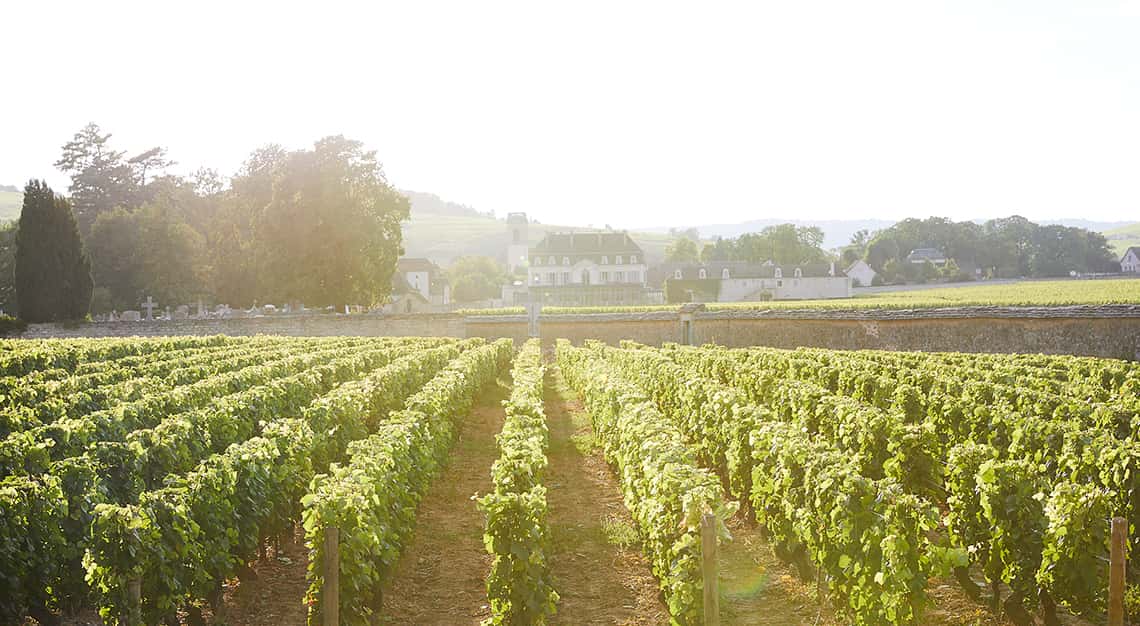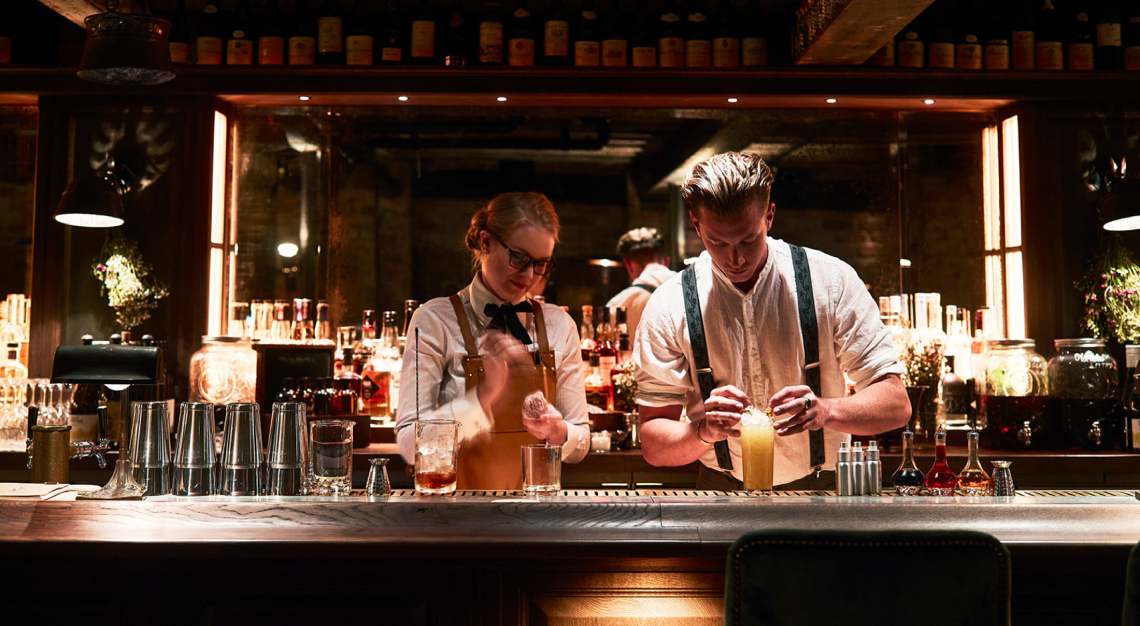When August Sebastiani, fourth-generation member of the noted Sonoma Valley wine family and president of 3 Badge Beverage Corporation tells you that his line of Bozal mezcals is now outselling his Pasote brand of tequilas, you’ve got to sit up and take notice. You might also have noticed that mezcal cocktails are appearing on more restaurant and bar menus. None of this is surprising; according to Impact Databank, mezcal has been growing at double-digit warp speed during the past few years, and in the process, making the United States the world’s largest market for what once was considered tequila’s “bad boy” brother. No more. Mezcal has arrived big time, and tequila drinkers are now reaching up for this next rung on the agave ladder.
In addition, whisky drinkers are finding familiarity in mezcal’s varying nuances of smoke and oak, while bartenders have found that those same mezcal attributes complement certain cocktails, especially those incorporating bourbon or scotch. But because not all mezcals are the same, we have gathered 11 of the best, so you can decide which ones are right for you.
Our best mezcal picks
- Best Overall Mezcal: Código 1530 Ancestral Joven
- Best Joven: Campante Joven
- Best Reposado Mezcal: Gracias a Dios
- Best Cristalino Mezcal: Contraluz Cristalino
- Best Añejo Mezcal: Ilegal Añejo
- Best Smoky Mezcal: Lobos 1707 Mezcal Artesenal
- Best Lightly Smoky Mezcal: Del Maguey Vida Puebla
- Best Tobalá Mezcal: Fósforo Penca
- Best Pechuga Mezcal: Bosscal Pechuga de Conejo
- Best Organic Mezcal: Cráneo
- Best Mezcal for Cocktails: Catedral de mi Padre Espadín
- Best Vegetarian Mezcal: Bozal Guías de Calabaza Sacrificio
Best overall mezcal
Código 1530 Ancestral Joven

You’ll find the majority of premium mezcals—including those on our list—are made by the Artesanal method, which permits either tahona (stone) grinding wheels or the mechanical shredding of agaves to extract their juices. Plus, copper pot distillation is allowed (but not column distillation). However, the requirements for producing the harder-to-find Ancestral mezcals dictate that agave crushing can only be done by tahonas or by hand, thus preserving the agave fibres to be included as part of the distillation process, which must be done in fire-heated clay pots. In addition, fermentation is often in hollowed-out tree trunks or stone vessels. No steel tanks or mechanization of any kind can be used. Obviously, this is a much more laborious and primitive method, but it produces some of the most historically accurate tasting mezcals. This is the case with Código 1530 Ancestral Mezcal, with its sweetly delicate smoked grass and earthy flavours laced with floral notes and a bright minerality. The hand mashing of the single village Papalomé agaves and fermentation in leather adds to the distinctiveness of this mezcal.
Best joven mezcal
Campante Joven

“Joven” means “young,” or in the case of mezcal, either unaged or aged for less than two months. Although clear in colour and similar to a “blanco” tequila in appearance, a joven mezcal will not taste anything like a blanco tequila (for one thing, it’s made with different agaves) and will have mezcal’s signature smokiness. However, the smoke in this small batch, copper pot-distilled joven is not as pronounced, thus it provides an ideal entryway for those experiencing mezcal for the first time. A skillfully blended ensemble of Espadín and the less-common wild-foraged Barril agaves, the flavour has light herbal tones of rosemary, eucalyptus, and mint, along with smoky wisps of floral and citrus.
Best reposado mezcal
Gracias a Dios Espadín Reposado

Floral, fruity and light on smoke, this mezcal’s colloquial-sounding name translates as “Thanks be to God,” a phrase that Querétaro, México bar owners Pablo Lopez, Enrique Jimenez and Xaime Niembro may have uttered when they met their future partner, fourth-generation mezcalero Oscar Hernández in Matatlán and discovered his pale gold elixir. Fermented in pinewood tanks for up to 15 days then aged for two months in a combination of new and once-used American oak barrels, the vegetal flavour has underlying hints of chocolate and curry, resulting in an extremely smooth sipping mezcal.
Best añejo mezcal
Ilegal Mezcal Añejo

Who wouldn’t want a mezcal marked “Ilegal” on its label? But you don’t have to hide in the trunk of a car or dodge border guards to enjoy this añejo, which has been aged for 13 months in a combination of American and French oak barrels after the agaves have been roasted using mesquite and eucalyptus wood. The result is a smooth intertwining of cloves, blood oranges and sweet agave that lingers on the palate with a touch of spice. As for Ilegal’s intriguing name, it originated “back in the day,” when a gringo named John Rexer began smuggling this mezcal out of Oaxaca and into his bar, Café No Sé (which means, “I Don’t Know”), in Antigua, Guatemala. Today, Ilegal’s legitimacy is enhanced by the fact that drinks giant Bacardi is now part owner of the brand.
Best cristalino mezcal
Contraluz Reposado Cristalino

It had to happen. After unseating reposado as Mexico’s most asked-for style of tequila, clear-filtered cristalino has now vaulted into the mezcal arena. And the first to have entered is also one of the best. After resting for approximately six months in charred American oak barrels, this Espadín mezcal is charcoal filtered, using a proprietary small batch process perfected by mezcalero Don Carlos León Monterrubio. While the liquid is not crystal clear (it has a very faint tint to it), the flavour is complex, with lemon, bacon and cedar, blanketed by a buttery-smooth mouthfeel.
Best smoky mezcal
Lobos 1707 Mezcal Artesenal

It’s too bad there is more hype than substance for this LeBron James-backed award-winning mezcal, because there is more to it than a cursory search of the internet might reveal. For example, it goes through a solera process that takes approximately two months. The mezcal is then finished for a short period in Pedro Ximénez (PX) sherry barrels. Yet it emerges as a clear mezcal, with a healthy countenance of smoke and a thick underblanket of citrus and red fruit, along with a touch of cedar and green olives. This is a mezcal drinker’s mezcal, enhanced by the fact that a portion of its proceeds is donated to various wolf sanctuaries in the United States and Mexico.
BUY NOW ON MASH & GRAPE: US$55
Best lightly smoky mezcal
Del Maguey Vida Puebla

Following the Del Maguey Single Village tradition of localized craftsmanship—somewhat akin to single estate wines—this newest addition to its collection is produced in a state-of-the-art palenque in Puebla, Mexico, and offers yet another mildly smoky way to gently enter the world of mezcal. Notes of roasted agave are softened by hints of citrus, white peach, and candied pine. The mezcal also contains a distinct minerality, thanks to the volcanic rock in the Puebla soil. Double copper pot distilled and bottled at an amiable 80-proof, Vida Puebla is ideal for sipping straight in a traditional copita.
Best tobalá mezcal
Fósforo Mezcal Tobalá Penca

The Tobalá plant is often referred to as the “king of agaves” because of its popularity and scarcity. Seeing this as a challenge, mezcalero Aarón Alva Sánchez spent 20 years perfecting a sustainable process for cultivating this elusive but flavorful agave. His semi-isolated work of distilling mezcal from Tobalá agaves in the village of Huehuetlán el Grande, just outside of Puebla, Mexico, was eventually discovered by food and spirits aficionado Jim Cramer, host of CNBC’s Mad Money. Cramer and his wife Lisa Detwiler partnered with Sánchez and his wife, Mariana to bring Fósforo to the United States in 2022. Especially notable is Fósforo Penca, which owes its rich fruity flavour and dark golden hue to the fact that this Tobalá mezcal has been aged up to three months in glass vessels containing a cooked Tobalá penca (leaf). As a result, there is very little perceived smoke in this mezcal. In fact, at first sip, one might guess it was a reposado tequila. Of course, it is not a tequila and technically is not a reposado, as it was not aged in wooden barrels. Rather, it is an “abocado con penca,” or “flavored with” a Penca leaf. As a result, it is a gentle way to enter the mezcal world—especially for people who aren’t sure if they’d like mezcals. They’ll like this one.
BUY ON BOUNTY HUNTER WINE & SPIRITS: US$140
Best pechuga
Bosscal Pechuga de Conejo

Be forewarned: this is not a mezcal for vegetarians or vegans. Pechuga—Spanish for “breast”—is an ancient mezcal-making technique that involves a skinned animal breast being hung over the heated agave distillation. As the spirit distils and the vapours condense, the heat and steam slowly cook the meat, killing harmful bacteria while allowing the fat and juices to drip into the mezcal, thereby imparting a deeper and slightly more savoury flavour. With their Pechuga de Conejo, Bosscal undergoes a unique triple distillation; during this third distillation the vapours—already enhanced by the use of locally harvested apples, along with other wild fruit—pass through the suspended breast of a rabbit (“conejo” in Spanish). Only mildly smoky with a sweet, wet grass aroma, the flavour is laced with anise, citrus and a gentle herbal undertone with a silky finish. Bosscal’s Pechuga de Conejo is only produced when apples are in season but is especially fitting right now inasmuch as January 22, 2023, marks the beginning of the Chinese zodiac’s Year of the Rabbit.
Best organic mezcal
Cráneo

Dedicated to the preservation of ancient Oaxacan methods of artisanal distillation, noted tequilero David Ravandi, working closely with local maestro mezcaleros in Santiago Matatlán, in Oaxaca, created one of the first organic mezcals. Based in Healdsburg, California and travelling between the Mexican cities of Guadalajara and Oaxaca, Ravandi personally oversees every step of this single estate mezcal’s sustainable, organic processes, from growing, harvesting, distilling and bottling. The skull dramatically depicted on Craneo’s black and white label symbolizes the Aztec Goddess Mictecacihuatl and the celebration of life. This medium-strength mezcal starts out with sweet barbecue smoke, then transitions to citrus, black cherries and roasted agaves; it pairs well with a La Aroma de Cuba Pasión cigar from Nicaragua.
Best mezcal for cocktails
Catedral de mi Padre Espadín

This relatively new yet already much-awarded brand was created by San Franciscans Jeff Block and his daughter Sydney, who, having lived for eight years in Oaxaca, Mexico, came to realize that mezcal was very often a family endeavour in its production. As a result, they created Catedral de mi Padre (“my father’s house”) to spotlight not just one, but six different mezcaleros, each of whom has become an equity partner in the brand and makes a different style of mezcal. Of these, we found the smooth, spicy sweetness of Catedral de mi Padre’s Espadín, with its medium-weight smoke, to be ideal for cocktails. Using relatively young five- to seven-year-old wild agaves which are sustainably grown, this 92-proof mezcal can hold its own in cocktails such as a Negroni, a Paloma, or a Mezcal Sour. And as a nice added bonus, a QR code on the bottle will introduce you to Jorge Octavio Cardaz Cualtamirano, the mezcalero who made Catedral de mi Padre’s Espadín.
Best vegetarian mezcal
Bozal Guías de Calabaza Sacrificio

For those vegetarians and vegans who may have felt left out by some of the other choices on our list, boy, have we got a mezcal for you. Sacrificial mezcals are typically produced in small batches for fiestas or local celebrations, often using pork, chicken or lamb in the final distillation. However, August Sebastiani decided to go a different route.
During the second distillation of this double copper pot distilled mezcal, pumpkin stems, in addition to local seasonal fruits and grains, are suspended inside the still in a basket. This locally harvested produce often includes pineapples, plantains and oranges, along with pumpkin seeds and chepiche, an aromatic Mexican herb commonly used for seasoning. The chepiche rounds out the vegetal flavours from the pumpkin stems and plantains, and creates a perfumed smoky aroma laced with orange blossoms and marzipan. The earthy flavour is rich with citrus peel and herbal notes, with a touch of eucalyptus in the finish.
FAQs
How does mezcal differ from tequila?
Although both are exclusively made in Mexico and distilled from roasted agaves, tequila can only use the Blue Weber variety and must be distilled in the town of Tequila in Jalisco and four other specifically designated Mexican states: Guanajuato, Michoacán, Nayarit and Tamaulipas. On the other hand, Mezcal—which was not recognized by the Mexican government until 1994—can be made in any of nine specified Mexican states, primarily in Oaxaca, but also in Durango, Michoacán, Tamaulipas, Guanajuato, Guerrero, San Luis Potosí, Zacatecas and Puebla. In addition, approximately 40 different varieties of agave—many growing wild—can be used to make Mezcal, unlike most of tequila’s cultivated Blue Weber agaves.
Why is mezcal smoky?
But mezcal‘s real standout characteristic is the way it is produced. Unlike tequila, in which the piñas or hearts of the agaves are steam-cooked in ovens, the piñas of mezcal agaves are fire-roasted by burning wood or charcoal in open stone or brick-lined pits, or palenques, which are covered with palm leaves or other native plant materials for three to four days to condense the smoke (“mezcal” roughly translates as “roasted agave”). This is what gives mezcal its smoky countenance, much like drying malted barley over burning peat is what gives Islay single malts their smoky flavours.
How should you drink mezcal?
“Don’t shoot the mezcal!” is sage advice by knowledgeable aficionados south of the border, because despite its hearty flavours, mezcal is not a spirit to be knocked back in one gulp. Rather, it should be sipped slowly—traditionally in a small earthen copita or a vaso veladora (votive cup)—to gradually discover and savour the many nuances of flavour that different mezcals offer.
“There is a saying in Mexico, ‘Treat both women and mezcal with respect and kisses,’ which means to appreciate mezcal you need to take small sips—like kisses—to properly taste it,” says Paola Magalí Segovia Arce, a master mezcalier who oversees 250 mezcals at Bakan Wynwood Mexican Restaurant in Miami, Florida, “And always accompany your mezcal with a bit of water between tastings, to cleanse the palate and hydrate.”
Unlike other spirits, mezcal should be served at room temperature. Chilling it dulls mezcal’s many natural flavour congeners. In Mexico, they often follow each sip with a slice of orange or grapefruit sprinkled with smoked sotal plant ashes or gusanos de maguey (salt mixed with pulverized agave larva; stateside, you may opt to use kosher or lava salt mixed with a small pinch of chilli powder instead).
How did I choose the mezcals on this list?
Believe it or not, the first thing I did was to see if they were readily available on the internet. Because if you can’t get it, what’s the point? Unlike most imported tequilas, where production is structured on a relatively large scale, many mezcals are small individual or family-run operations, and unless they are fortunate enough to have marketing and distribution connections, you may never find them on this side of the Rio Grande. But then comes the all-important element of taste. The degree of smokiness is not the deciding factor; while some of the best mezcals thunder out of the bottle with domineering smoke, other superbly crafted mezcals offer just a faint whiff. It’s the flavour beneath the smoke that matters most.
I start by nosing the liquid directly from the bottle, as that small opening provides an initial—although rudimentary—concentration of each mezcal’s personality. Then I pour a small amount into a Glencairn tasting glass and do a sniff, sip and spit routine, not actually swallowing the liquid but by “breathing” it through the nose, as there are far more taste receptors in our noses than in our mouths. Only then can I dissect more of the flavours, which are often hidden underneath mezcal’s varying degrees of smokiness.
Why should you trust us?
Richard Carleton Hacker has been writing about spirits, restaurants, wines and cigars for over forty years and has written for Robb Report since 1995. His work has also appeared in numerous other lifestyle magazines, including Playboy, The Quarterly Review of Wines, Tasting Panel, and the Somm Journal. In addition, he served for 10 years as a judge and team captain for the San Francisco World Spirits Competition. He has authored 11 books, was knighted in Germany, is an honorary member of numerous whisky and wine societies, and has travelled the world visiting countless distilleries in Scotland, France, Italy and, of course, Mexico. More of his writings and travels can be found on richardcarletonhacker.com.
This story was first published on Robb Report USA






